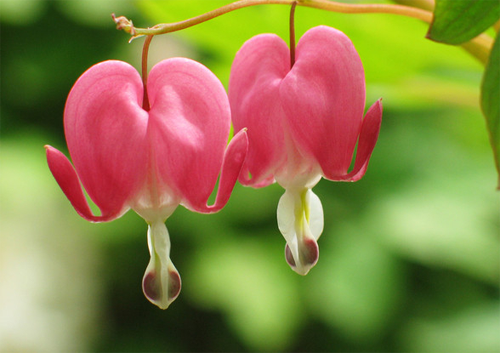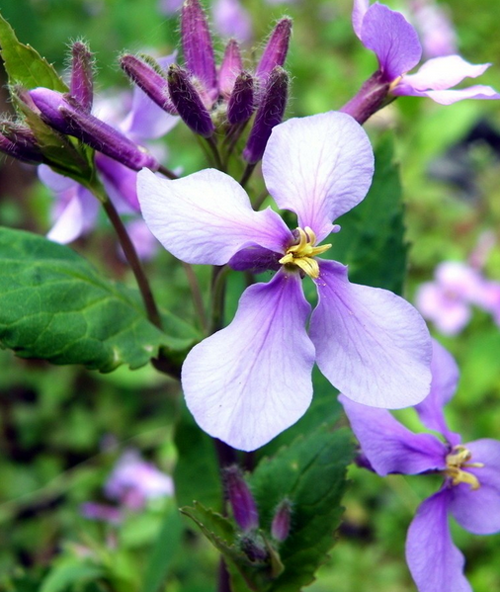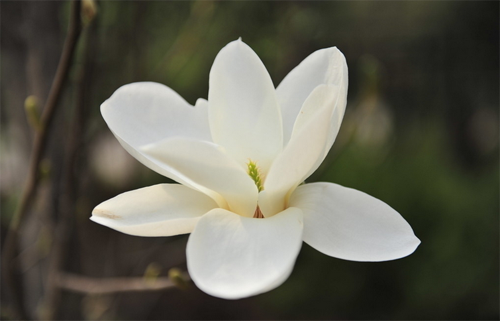How long is the culture method and propagation florescence of purse tree peony
Although the purse peony has the word peony, it really has nothing to do with the peony, and the blooming flowers do not want to. The blooming flowers of the purse peony are hanging upside down and are very good-looking. Let's take a look at the breeding methods and breeding methods of the purse peony. How long is the flowering period of the purse peony?

Culture methods of purse peony:
1. Selection of basin soil
Purse peonies can be planted on the ground or in pots, and clay pots with slightly deeper and better permeability are selected for planting.
Such as plastic basin, porcelain basin, can be in the basin bottom cushion broken charcoal block or broken hard plastic foam block, enhance air permeability and drainage. Born in loam soil with more humus, rotten leaf soil and vegetable garden topsoil can be mixed and cultivated in the same amount, and grow poorly in sandy soil and clay soil.
2. Water and fertilizer management
Purse peony is slightly resistant to drought, afraid of stagnant water, should be properly watered, not dry, must be watered thoroughly, do not have stagnant water, the sunny days of spring and autumn and early summer, once a day or every other day, and once every 3 to 5 days in cloudy days, often maintain half-moisture in the basin soil, which is beneficial to its growth, too wet and easy to rot roots, too dry and bad leaf yellow. In the midsummer and winter dormancy period, the basin soil should be relatively dry and slightly moist.
Purse peony likes fertilizer, so when planting on the basin or turning the basin to change soil, it is advisable to add some bone powder or mature organic fertilizer or N-P-K compound fertilizer to the culture soil and apply thin N-P-K liquid fertilizer once from 10 days to 15 days during the growing period, so as to make its leaves blossom and multiply, stop fertilizing after flower buds develop color, and do not apply fertilizer during dormancy.
3. Light and temperature
Purse peony is native to Hebei and northeast China. It enjoys a semi-shady environment with sufficient scattered light and is relatively cold-resistant, while it can be placed under a big tree in the courtyard or under a shade rack because it is afraid of high temperature in midsummer and strong light exposure. or the building back shade side, east or north balcony.
Summer dormancy period should be placed in a well-ventilated shade, can not see direct light, often sprinkle water to the nearby ground, improve air humidity, reduce the temperature.
4. Summer and drainage
Purse peonies avoid too much rain and hot heat for a long time, and encounter high temperature and wet weather for a long time. It will scorch the leaves and rot the roots.
In the hot summer period, potted purse peonies can be moved to the seedling shed for shade, or buried in the soil to prevent heat and cool down, and keep good drainage and ventilation. Spray water on branches and leaves and around it every day when there is no rain, increase air humidity, ensure water supply during peony flower bud differentiation, pay attention to drainage in rainy season, and pour flowerpots on cloudy and rainy days to prevent stagnant water in the pots.
5. Post-anthesis management
After flowering, 150-fold Bordeaux solution or 800-l000 betobuzin solution was sprayed every 10 seconds for 15 days to control leaf diseases. Peony root is sweet and easy to be harmed by ants or its grubs. It can be irrigated and killed with 1000 times dichlorvos solution instead of water.
6. Overwintering pruning
It should be well ventilated and transparent, and it should be reshaped and trimmed after falling leaves in autumn and winter. Cut off dense branches, such as parallel branches, cross, introverted and pest techniques, etc., to keep the plant in a beautiful shape. In late autumn and early winter, potted herbs can be buried in the soil, with branches exposed on the ground and protected by grass or choked soil to survive the winter. (replicable: plastic surgery)
Others put the flowerpot directly indoors for the winter, remove the mulch at the beginning of the next spring, move it outside, put it in a ventilated and sunny place, strengthen fertilizer and water management, and make it blossom naturally.
Points for attention in lotus leaf peony culture:
1. Leaf spot
The disease affects leaves, petioles and stems. The disease spot is round, and then expands to show irregular large disease spot, the disease spot changes from reddish brown to dark brown, the center is grayish brown. Leaf spot pathogen overwintered in the diseased body or then to the surface of the ground, and spread and infected with wind and rain in the next year.
Treatment: remove the diseased tissue in time and burn it centrally.
2. Leaf rust
Black-brown small round spots are produced on the leaves, and then enlarged or the disease spots are irregular large patches, the edges are slightly raised, and small black spots are scattered on both sides of the leaves. Too dense planting, poor ventilation and excessive humidity are easy to develop. Deal with:
Spray at the initial stage of the disease to prevent spread.
Commonly used agents are carbendazim, thiophanate, Dysen manganese, carbendan and so on. It is best to use them alternately to avoid drug resistance.
Propagation methods of lotus leaf peony:
1. Ramet propagation
In early spring and February, when the new buds sprouted but the new leaves were not on display, remove the plant from the basin, shake off the soil from the roots, cut off the tender stems around the roots with a sharp knife, plant two or three plants in one basin, cover the soil two or three centimeters above the old soil marks, water, place in shade, grow new leaves according to routine management, and bloom in the same year.
Note: the new leaves of the old plants are not divided, the dormancy period in late autumn is not divided, it can only be divided once every 2 or 3 years, and can not be divided every year.
2. Cuttage propagation
Cut off the inflorescence after the flower fade, cut 10 cm to 15 cm with axillary buds in the lower part, dip the incision in sulfur powder or plant ash, insert it in the plain soil, place it in the shade after watering, often spray water to the cuttings, but to control the basin soil to water, slightly moisten not to dry, more than a month can take root, the next spring with soil pot planting, good management, the same year can blossom.
3. Sowing and reproduction
After the seeds are ripe, they will be sown as they are picked, but the seedlings will not blossom until 3 years. Family reproduction is generally not used, and garden departments will adopt them for mass reproduction or breeding new hybrid varieties.
In autumn, the underground part is dug out, the rhizome is separated according to the natural segment, and planted separately. In addition, the rhizome can be cut into segments, each section with bud eyes, inserted in the sand, to be rooted after planting basin. Sowing and propagation, seedling cultivation for 3 years before flowering.
Adequate fertilizer and water should be given during the growing period, and the florescence should be moved less to avoid falling flowers. After flowering, the aboveground part withered, the rhizome can be dug up, the temperature was kept at 15 ℃ and the humid environment, and the flowers could be seen again in about 70 days.
How long is the flowering period of purse peony:
From April to June, two months is a long time.
The breeding and breeding methods and florescence of purse peony are introduced here. It is necessary to seize the florescence to appreciate the beauty of purse peony.
The propagation method of purse tree peony it is common to propagate by ramet or rhizome. In autumn, the underground part is dug out, the rhizome is separated according to the natural segment, and planted separately. In addition, the rhizome can be cut into segments, each section with bud eyes, inserted in the sand, to be rooted after planting basin. Sowing and propagation, seedling cultivation for 3 years before flowering. Purse peonies should be given sufficient fertilizer and water during the growing period and move less during flowering so as not to affect the ornamental value of falling flowers. After flowering, the aboveground part withered, the rhizome can be dug up, the temperature was kept at 15 ℃ and the humid environment, and the flowers could be seen again in about 70 days. There are three propagation methods of purse peony: first, the most commonly used method of plant division. In early spring, in February, when the new buds sprout and the new leaves are not on display, remove the plant from the basin, shake off the soil from the roots, cut off the tender stem with whiskers around the roots with a sharp knife, plant two or three plants in a basin, cover the soil two or three centimeters above the old soil marks, water, place shade, grow new leaves according to routine management, and bloom in the same year. Ramet should pay attention to two points: ① should be timely, such as the new leaves of the old plant have been expanded and then ramet, easy to damage the root system, the survival rate is low, the late autumn dormancy period can also split, but the survival rate is not high. ② can only be divided at intervals of 2 or 3 years, and can not be divided every year. The second is the cutting method, cut off the inflorescence after flower fade, cut 10 cm to 15 cm with axillary buds in the lower part after 7 days to 10 days, dip the incision in sulfur powder or plant ash, insert it in plain soil, place it in shade after watering, often spray water to the cuttings, but to control potted soil watering, slightly moisten can not dry, more than month can take root, the next spring with soil pot planting, good management, can blossom in the same year. Third, sowing, seeds mature, sowing with picking, but the seedlings take 3 years to blossom, family reproduction is generally not used, garden departments for mass reproduction or the cultivation of new hybrid varieties. Main points of propagation of purse tree peony
Purse peony is a perennial perennial herbaceous flower, because its leaves are like peony leaves, flower purse, so named. Purse peony can be said to be another kind of Chinese rose flower, which has the same meaning as a rose to a lover. Purse peony can be propagated by dividing plants or cutting the rhizome. The editor will introduce you to the breeding methods and matters needing attention.
Purse peony
Ramets are often used or rhizomes are truncated for propagation. In autumn, the underground part is dug out, the rhizome is separated according to the natural segment, and planted separately. In addition, the rhizome can be cut into segments, each section with bud eyes, inserted in the sand, to be rooted after planting basin. Sowing and propagation, seedling cultivation for 3 years before flowering. Adequate fertilizer and water should be given during the growing period, and the florescence should be moved less so as not to affect the ornamental value of falling flowers.
After flowering, the aboveground part withered, the rhizome can be dug up, the temperature was kept at 15 ℃ and the humid environment, and the flowers could be seen again in about 70 days. There are three propagation methods of purse peony: first, the most commonly used method of plant division. In early spring, in February, when the new buds sprout and the new leaves are not on display, remove the plant from the basin, shake off the soil from the roots, cut off the tender stem with whiskers around the roots with a sharp knife, plant two or three plants in a basin, cover the soil two or three centimeters above the old soil marks, water, place shade, grow new leaves according to routine management, and bloom in the same year. Ramet should pay attention to two points: ① should be timely, such as the new leaves of the old plant have been expanded and then ramet, easy to damage the root system, the survival rate is low, the late autumn dormancy period can also split, but the survival rate is not high. ② can only be divided at intervals of 2 or 3 years, and can not be divided every year. The second is the cutting method, cut off the inflorescence after flower fade, cut 10 cm to 15 cm with axillary buds in the lower part after 7 days to 10 days, dip the incision in sulfur powder or plant ash, insert it in plain soil, place it in shade after watering, often spray water to the cuttings, but to control potted soil watering, slightly moisten can not dry, more than month can take root, the next spring with soil pot planting, good management, can blossom in the same year. Third, sowing, seeds mature, sowing with picking, but the seedlings take 3 years to blossom, family reproduction is generally not used, garden departments for mass reproduction or the cultivation of new hybrid varieties.
- Prev

How long is the flowering period of the culture method of Pueraria lobata?
Zhuge vegetable, upon hearing this name, is particularly domineering, just like Zhuge Liang is alive. Zhuge vegetable can still be eaten and become smart. what is the breeding method of Zhuge vegetable? How long is the florescence? The culture method of Pueraria lobata: seed propagation, start sowing in autumn, and keep warm in winter.
- Next

How to plant diseases and insect pests in magnolia and its control methods
Magnolia is very common, many urban greening is also used in magnolia, magnolia is very large, most of them are white, is very good-looking, how to grow magnolia? What are the diseases and insect pests? How to prevent and cure it? How to grow magnolia: environmental choice, magnolia like light, young trees are more shady.
Related
- Fuxing push coffee new agricultural production and marketing class: lack of small-scale processing plants
- Jujube rice field leisure farm deep ploughing Yilan for five years to create a space for organic food and play
- Nongyu Farm-A trial of organic papaya for brave women with advanced technology
- Four points for attention in the prevention and control of diseases and insect pests of edible fungi
- How to add nutrient solution to Edible Fungi
- Is there any good way to control edible fungus mites?
- Open Inoculation Technology of Edible Fungi
- Is there any clever way to use fertilizer for edible fungus in winter?
- What agents are used to kill the pathogens of edible fungi in the mushroom shed?
- Rapid drying of Edible Fungi

